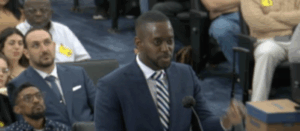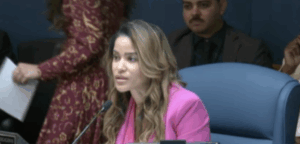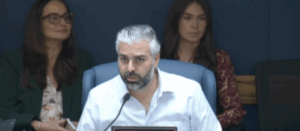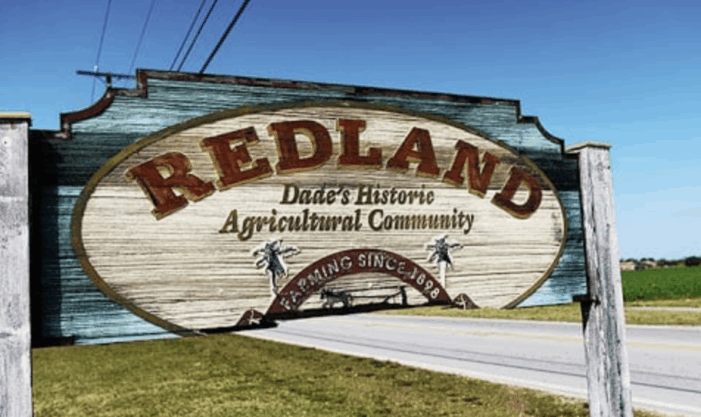More farmland in the Redland went “poof” last week when the Miami-Dade Commission approved an application so developers can build Bluenest at Krome: 700 townhomes on 91 acres zoned for 223 single family, detached homes.
The change in zoning from “estate density residential,” to “low-medium density” was approved at the Community Development Master Plan meeting Tuesday with a unanimous vote.
There was overwhelming community support for the project, even if many decided to simply wave to show they were in favor, and only a few people who spoke against it. Supporters focused on how it would provide workforce housing in the area. “I see it as next generation housing,” said Ken Forbes, adding that the developer had reached out and met with the community.
But the reality is that only 20% of the units will be sold to people who make 140% of the area median income, which in Miami-Dade County is $79,400, according to the U.S. Department of Housing and Urban Development. And 140% of $79,400 is $111,160. If that’s who qualifies for affordable or workforce housing, the university students who were there hoping to be residents are going to have to think again.
Read related: Kendall residents oppose early talks for development of waste transfer facility
It also means 80% will be “sold for maximum profit,” said Vanessa McDonald, a Redland resident who spoke against it. “It’s lower than most prices, yes, but is it really affordable?”
Most of the opposition was about the density — and the encroachment of development into what is a mostly rural area.
“This project is an affront to our agricultural community. It does not fit in everything surrounding it,” McDonald said, adding that it would put a strain on schools, hospitals, landfills, water supply, fire rescue response times and other county services.
Natalie Grant, a lifelong resident of Southwest Dade and a black farmer, said she found herself “at the intersection of both hope and despair.” She said the project could completely transform the neighborhood, but negatively.
Miami-based Bluenest Development filed land use amendment applications last year for three separate properties in Southwest Dade that could add up to almost 1,100 new homes. Bluenest at Krome would be the largest, with 700 homes, including at least 140 townhomes, plus 148,104 square feet of retail and food stores, at the southeast corner of Krome Avenue and Southwest 272nd Street. The company already owns about 29 acres of the property and has the rest under contract.
The county encourages a mix of housing types on large developments, said Bluenest lobbyist Pedro Gassant, who’s fast-talking and fast-thinking presentation stole the show and made Ladra feel for a minute like she was watching a Showtime series. He is a  rising star. Learn his name, because we will hear more from him.
rising star. Learn his name, because we will hear more from him.
Gassant began by confidently asking everyone in favor of the project to stand. Most of the audience in commission chambers at County Hall stood up. “This is such a great visual, I could just say this is my presentation,” he said.
But he did not. He did, however, turn what could have been a 25-minute presentation into a 8-minute one. And that surely scored points with some commissioners.
“You know that we’re the epicenter of the housing crisis,” Gassant said. “We have to do more to address the unaffordable issues we are facing. we are facing a crucial shortage. we have a very low inventory.” That has driven the average price of homes to $665,000, he said, and, subsequently, rents have raised as well.
Read related: Miami-Dade Commission to consider another agricultural zoning change
The market is only going to get worse, he said.
“The county has recognized that we have to accelerate development, and you know we have a limited land supply,” Gassant told them, adding that the townhouse component would help provide for the “missing middle.”
What does that mean?
 “That means that with a $4,500 deposit, and $2,600 a month, you can own a home,” Gassant said, adding that a similar property as a nearby rental would require an $8,400 deposit for the first three months to move in. Over 30 years, a renter would pay over $280,ooo more, he added. “With no equity, no homeownership.”
“That means that with a $4,500 deposit, and $2,600 a month, you can own a home,” Gassant said, adding that a similar property as a nearby rental would require an $8,400 deposit for the first three months to move in. Over 30 years, a renter would pay over $280,ooo more, he added. “With no equity, no homeownership.”
The project also serves the entire community, which he said is a food desert, by having an on-site grocery store. And there isn’t going to an adverse traffic impact, Gassant added with a straight face. “The infrastructure there is enough to accommodate.”
District 8 Commissioner Danielle Cohen Higgins said that she was pleased to see the number of people that spoke in favor. “It’s clear to me that you spent time in this community, speaking about this project,” Cohen Higgins said, adding that the support was from a diverse population of people.
“What I heard from those who spoke were people saying we need affordable housing for sale, which is something that I have been trying to accomplish for my entirety as a commissioner,” Cohen Higgins said, adding that 99% of the time they are for rent. “The American Dream is only achievable in this country for most with the ability to buy a home and pass that home on to
“At over $600,000, that ability is closed to so many in our community,” she said.
Cohen Higgins asked if the county could get more than 20% of the units earmarked for workforce housing, which is 140 units out  of the 700, which would start at $341,000. She added that the United Teachers of Dade teachers union had sent a letter supporting the project because of the lack of housing that forces teachers to move to Broward.
of the 700, which would start at $341,000. She added that the United Teachers of Dade teachers union had sent a letter supporting the project because of the lack of housing that forces teachers to move to Broward.
She did not get a commitment from the developer, but was happy with it anyway. “It’s a big deal,” Cohen Higgins said. “We talk about our housing crisis all the time and I feel strongly that this is exactly the kid of project our community needs.”
Read related: Survey of Kendall residents shows they agree on Calusa, split on fluoride
Commissioner Raquel Regalado was interested in the infrastructure investment, which includes a regional pump station to meet the needs of the basin, that other developments can also use, so they don’t plant more septic sewers in the ground. “This is an area that does not have access to water and sewer and does not have the development required to get water and sewer,” Regalado said. “This is a community benefit.”
She also asked the developer to consider stormwater drainage when making their landscape choices and asked for a friendly amendment providing for that. The developer agreed.
Commissioner Kionne McGhee said he would support it because he would take them at their word on the traffic study, which was his major concern. “That traffic is horrendous between the hours of 5 p.m. and 8 p.m. due to the increase of density in the area.”
Commission Chairman Anthony Rodriguez said he liked the farm style design on the homes and the fact that the single family homes were on the perimeter of the property — two things that would help the project fit into the neighborhood.
“Development is coming. This is something that we are expecting. It is coming and this project is within the UDB line,” Rodriguez  said, referring to the Urban Development Boundary for which the commission needs a super majority to approve development. “Our staff, it is not a common theme for them to recommend projects like this and the fact that they recommend it speaks volumes to the work that you put into it.”
said, referring to the Urban Development Boundary for which the commission needs a super majority to approve development. “Our staff, it is not a common theme for them to recommend projects like this and the fact that they recommend it speaks volumes to the work that you put into it.”
A few commissioners said the project was “great” and spoke about the importance of mixed-use, live-work-play projects to bring jobs to outposts of the county and reduce traffic.
Bluenest Development is on a tear in Southwest Dade, planing two new communities. Bluenest Naranja would have 284 townhouses on 26.3 acres at 15335 SW 268th St. Bluenest Roatta would have 100 townhouses on 8 acres at the northwest corner of Southwest 226th Street and Southwest 129th Avenue. The both will have 20% of the homes earmarked for workforce housing.
“Redland is not known for townhomes. But all of a sudden it’s been overwhelmed with townhomes,” Mary Waters, a resident of the area, said at the meeting Tuesday. She also used the word “row houses” to describe the Bluenest at Krome project. “It’s known for agriculture. That’s why many of us came to Southwest Dade.
“The density of population being put in these areas is overwhelming.”


